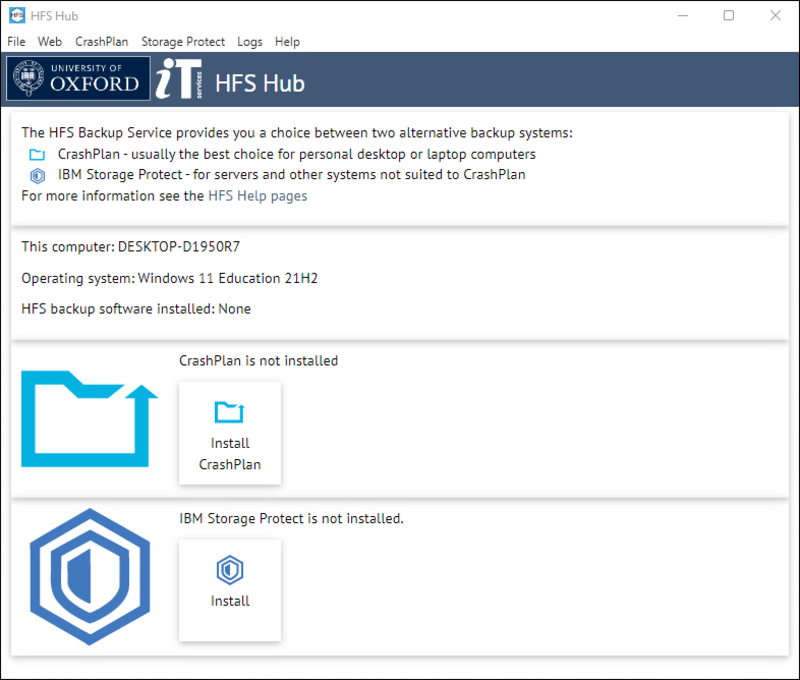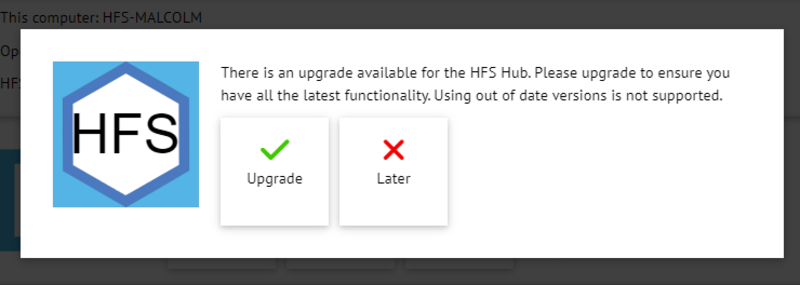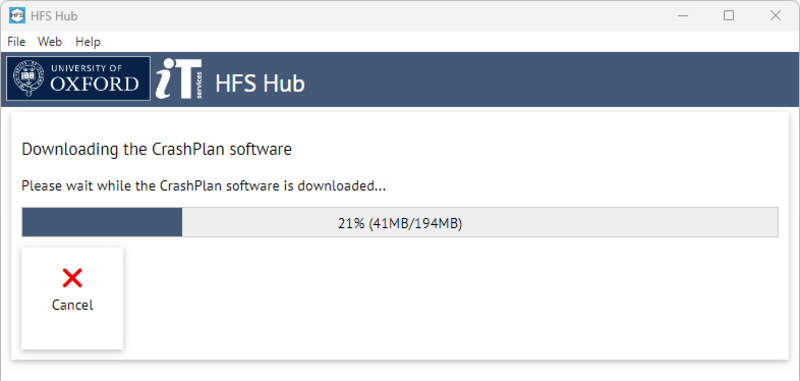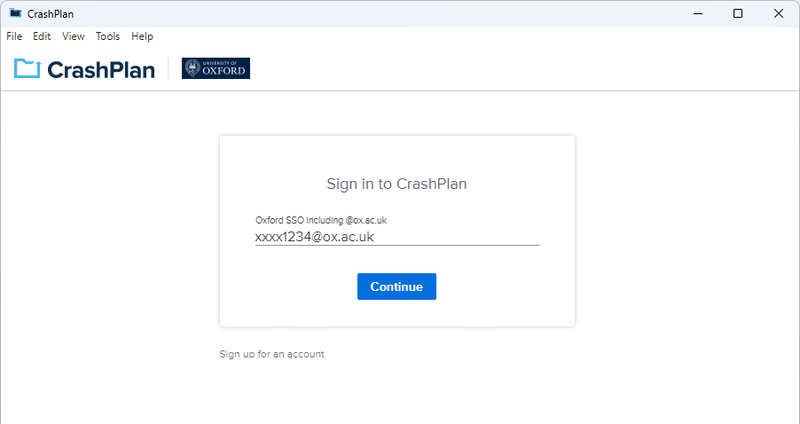Download the HFS Hub installer from the link below.
When downloaded run the installer to install the HFS Hub. You will see the HFS Hub Setup Wizard
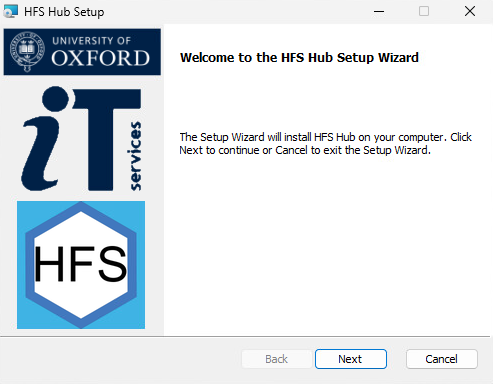
When you click Next you will see the following screen
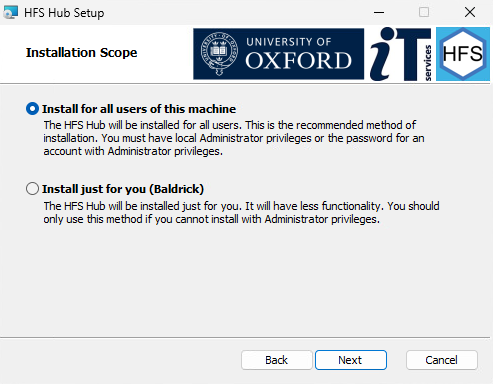
Select the default option, Install for all users of this machine, unless you don't have admin rights or the password for an admin account on this computer. Only in those circumstances should you select Install just for you.
When you click Next installation will start. When it completes click Finish. The HFS Hub should then start (unless you clear the Launch HFS Hub checkbox). If it doesn't you can start it from the Start Menu.
Download the HFS Hub package from the link below.
When downloaded run the installer to install the HFS Hub. You will see the installer welcome screen
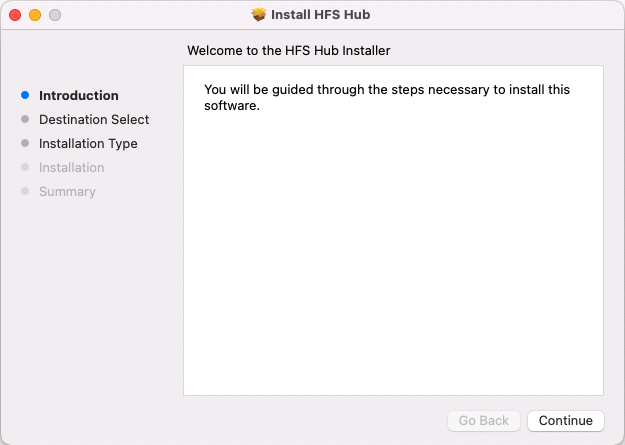
Click Continue to take you to the Installation Type screen.
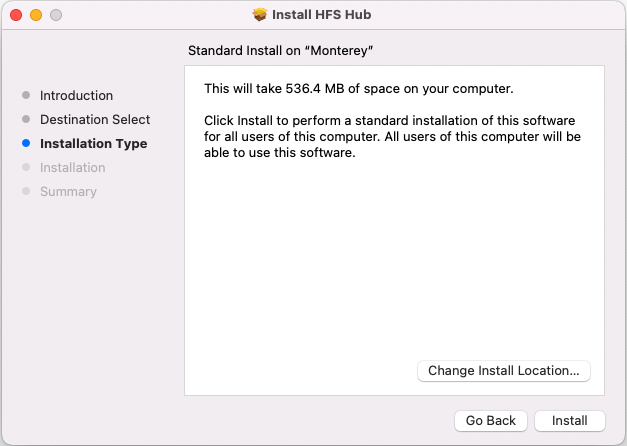
Here you should click the Install button unless you don't have admin rights or the password for an admin account on this computer. Only in those circumstances should you select Change Install Location... and at the next screen
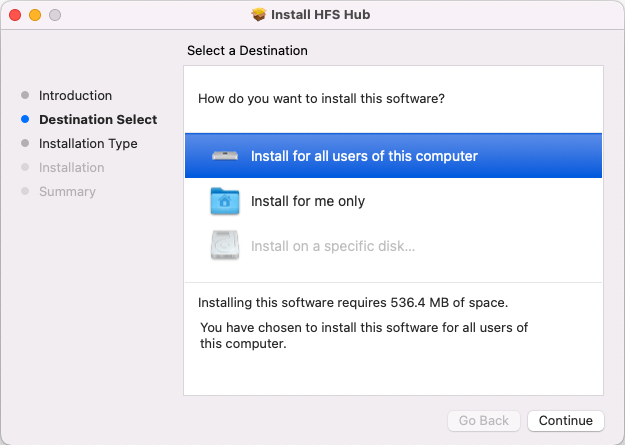
select Install for me only then Continue. You will be returned to the Installation type screen where you can press Install.
Unless you are installing for you only you will be prompted for your password or a password of an administrator account.
Once installation completes you can start the HFS Hub from the Launchpad or Finder in the usual way.
Download the HFS Hub package from the appropriate link below.
HFS Hub for Debian based Linux (Ubuntu, Debian etc.)
HFS Hub for RPM based Linux (RHEL/Centos/Rocky Linux/AlmaLinux 8+, Fedora, OpenSUSE, etc.)
HFS Hub for RHEL/Centos/Scientific Linux 7
HFS Hub for SUSE Linux Enterprise Server 12
When downloaded install the package in the usual way.


